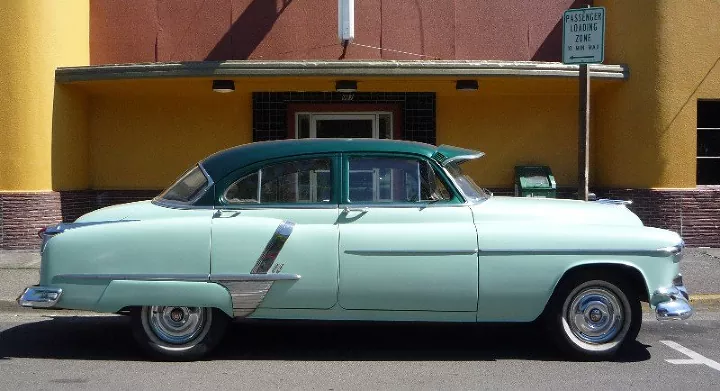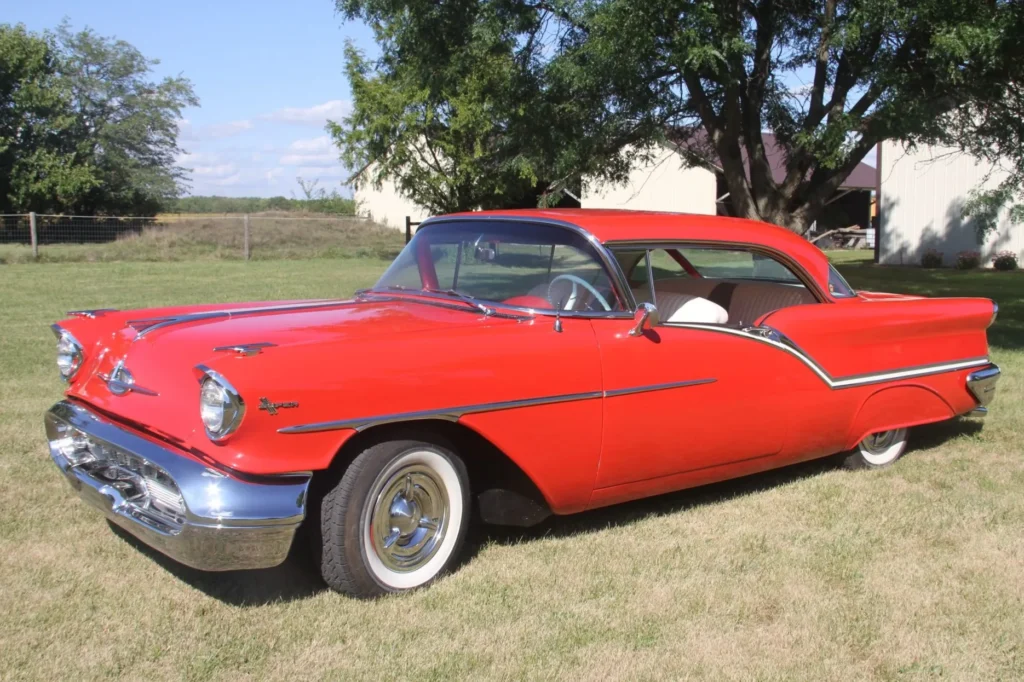
In a recent article in Curbside Classic – a popular automotive blog for devotees of older cars – a contributor creates an ‘auto’ biography out of the cars of his childhood. The author, who could be described as a bona fide auto aficionado – not only recalls the make, model, year, and color of each car that made its way into his driveway, but calls upon the family automobile to recall the everyday events of his young life. This recollection cause me to think about my own family automotive history, which, as it turns out, couldn’t be further removed of that of the man who ‘grew up loving cars.’

Although I grew up in Detroit during the Golden Age of Car Culture, I was aware of cars in only a general sense. I remember being able to recognize the makes of cars quite easily; the ‘planned obsolescence’ of the 1950s, which resulted in new and distinctive designs every model year, made it possible distinguish one auto manufacturer from another without having an extensive automotive background. Games of ‘I spy’ during family road trips also gave me an awareness of the different car makes and models. However, in terms of our family cars, my memory is quite shaky, most likely because there was a significant amount of time when we as a family didn’t have a car at all.

I remember the first car that we owned was a 1950ish Kaiser which was dark green in color. At some point it was traded in for a 1951 or 1952 light green Oldsmobile. I don’t recall much about these cars other than they were roomy enough to hold two adults and three squirmy kids. We took this car on trips to Camp Dearborn for picnics and to a rented cottage on Lake Avalon, one of Michigan’s many inland bodies of water. However, the car I remember most from this era didn’t belong to us at all, but to my oldest brother. When we ventured on a road trip to Texas, with my cigar-smoking grandfather in tow, my brother allowed us to use his brand spanking new fire engine red 1957 Oldsmobile. That was a fun ride.

In the winter following the Texas trip, my father died, leaving us carless as my mother never learned to drive. Consequently we spent the next five years bumming rides and relying on public transportation until my brother turned 16. My mother purchased a 1960 white Ford Fairlane – why and from who I don’t know. My brother drove the Fairlane until he totaled it driving down our neighborhood street. My mother replaced that car with a 1960 Corvair which was the car I learned to drive on. I was able to get a driver’s permit at 15 with the stipulation that an adult was present in the car while I was driving. This requirement made absolutely no sense, as my non-driving mother and very nervous was appointed to make sure I was competent behind the wheel. I remember my mother grimacing and holding onto the door handle tightly whenever my gear shifting was less than perfect. It is no wonder that I never became a confident driver.

At some point the Corvair was replaced with a 1964 Pontiac Tempest, no doubt selected by my brother for its resemblance to a GTO. That was the car I shared with my brother until he purchased a 1967 VW Beetle on his 21st birthday. My mother knew nothing about cars; consequently, she concluded if she paid for insurance and gas we were good to go. The cars were never maintained properly; the muffler on the Tempest was replaced only after I received a ticket for excessive noise.

My younger sister and I shared my brother’s VW while he was off at school. The car was a bit beat up; my brother had repeatedly smashed in the front end. He didn’t get it repaired until I ran into something and paid for my damage [and his] out of my own pocket. When I turned 21, I purchased my own Beetle and drove it for seven years until it was totaled while parked in front of my apartment building.

It is often said that music is the history of our life. Yet the same could be said for the automobiles that carried us through our childhoods and teenage years. Just as a song often serves as a connection to a particular event from the past, a car can bring back memories of family vacations, sibling dynamics, or a young life on the verge of adulthood.

































